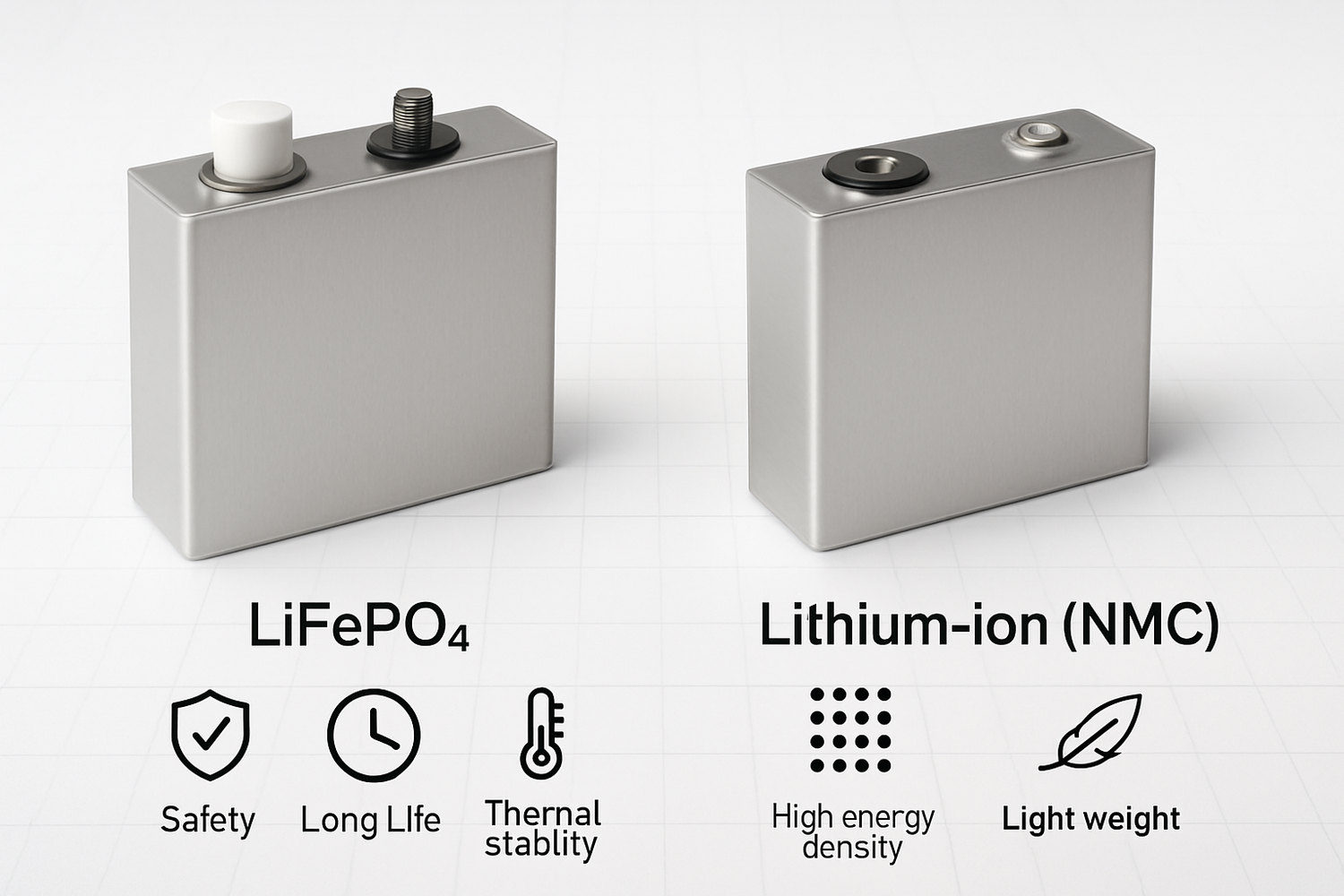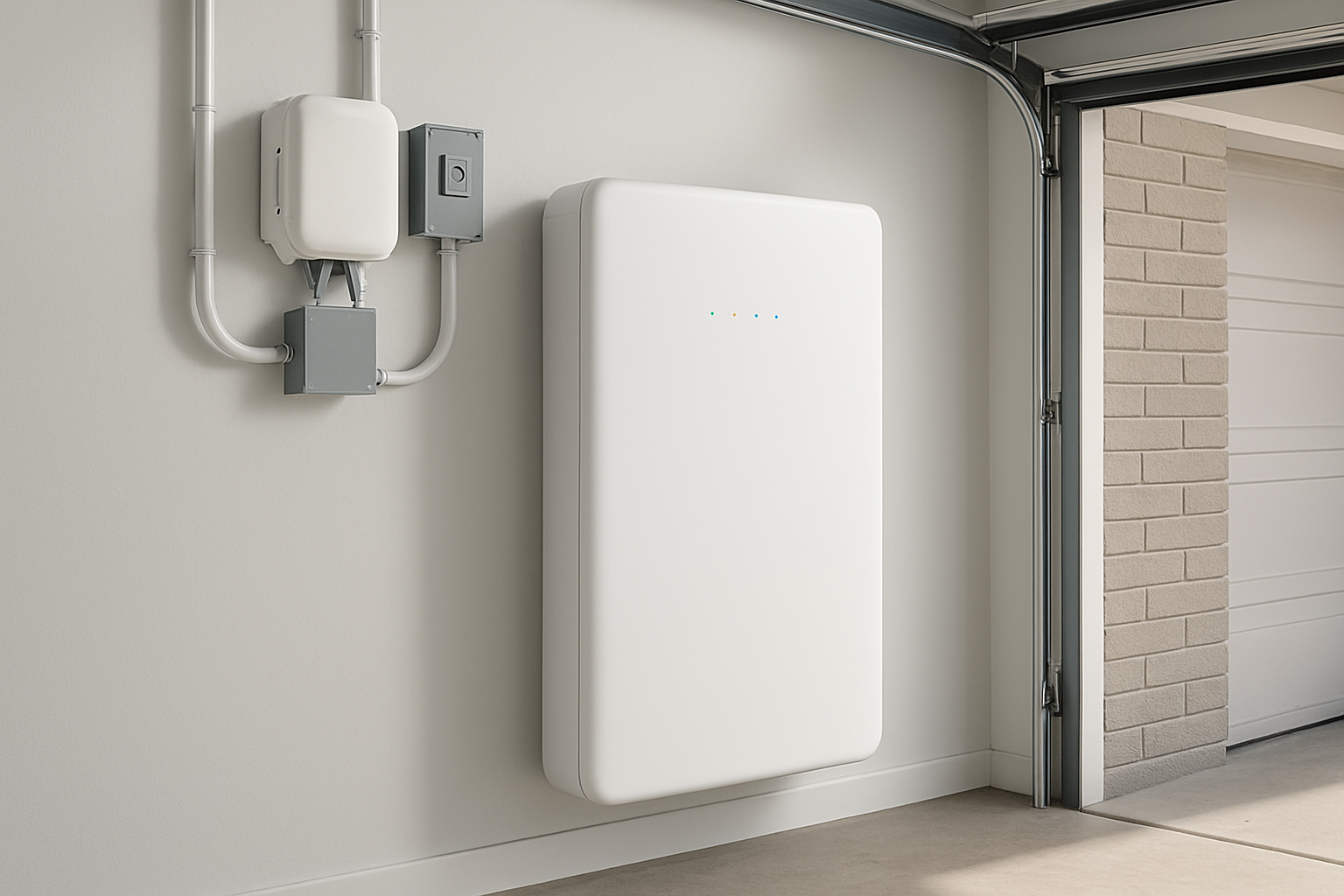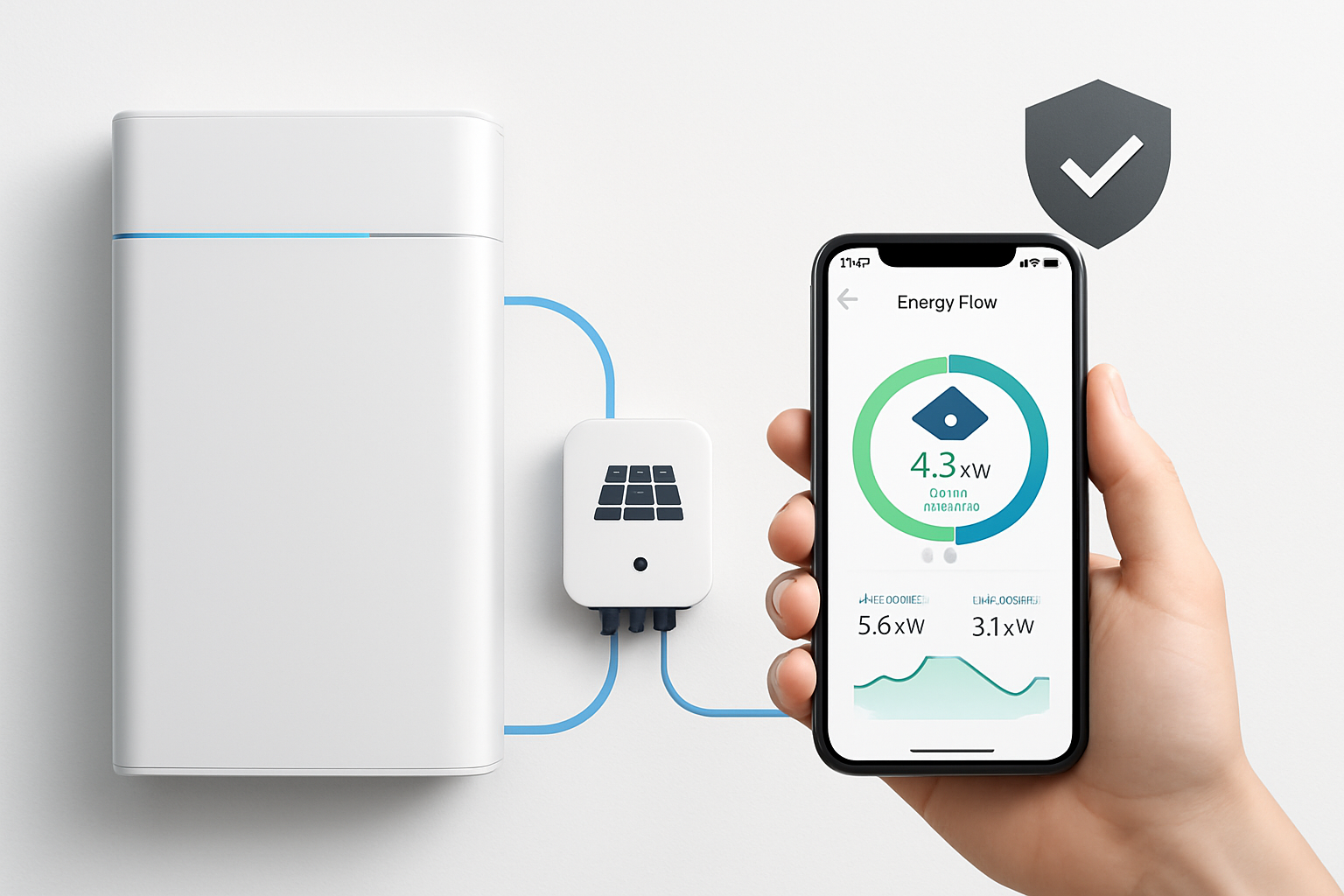As more households turn to solar energy and battery storage for energy independence, the conversation naturally shifts toward safety. A home battery is a significant addition to your property, and understanding its safety profile is crucial. The two leading technologies in this space are Lithium Iron Phosphate (LiFePO4) and traditional Lithium-Ion, which often includes chemistries like Nickel Manganese Cobalt (NMC) or Nickel Cobalt Aluminum (NCA). While both are powerful, their fundamental differences have significant implications for home battery safety.
Understanding the Core Chemistry: What Makes Them Different?
The safety of a battery begins at the molecular level. The materials used in its construction dictate how it behaves under stress, how it ages, and how it reacts to faults. This is where LiFePO4 and other Lithium-Ion batteries diverge significantly.
The Structure of Lithium-Ion (NMC/NCA) Batteries
Traditional lithium-ion batteries, such as NMC and NCA, are known for their high energy density. This means they can store a lot of energy in a small, lightweight package. This characteristic makes them excellent for portable electronics like smartphones and for electric vehicles where space and weight are primary concerns. However, this high energy density comes from a chemical structure that is more susceptible to thermal stress. The materials can become unstable at higher temperatures, a key factor in their safety profile.
The Stability of LiFePO4 (Lithium Iron Phosphate)
LiFePO4 batteries, in contrast, use a different cathode material: lithium iron phosphate. This compound features an incredibly stable, three-dimensional crystal structure. The phosphorus-oxygen bonds are very strong, making the battery chemically and thermally robust. According to a report by the International Energy Agency, The Role of Critical Minerals in Clean Energy Transitions, LFP chemistry is inherently safer, making it highly suitable for stationary applications like a home energy storage system where safety and longevity are prioritized over minimal size and weight.
A Head-to-Head Safety Comparison
When evaluating home battery safety, we look at how a battery responds to adverse conditions. This includes extreme heat, physical damage, and the natural process of aging. In these areas, the differences between the chemistries become clear.
Thermal Runaway: The Critical Safety Metric
Thermal runaway is a chain reaction where a battery's internal temperature increases uncontrollably, potentially leading to fire or smoke. This is the most serious safety concern for any lithium battery. LiFePO4 batteries have a significant advantage here. Their thermal runaway threshold is around 270°C (518°F). In contrast, NMC batteries can enter thermal runaway at a much lower temperature, around 210°C (410°F). This wider safety margin means a LiFePO4 battery can withstand more extreme conditions before becoming unstable.
Response to Physical Damage
Accidents can happen. A battery could be punctured, crushed, or subjected to a severe impact. In these scenarios, LiFePO4 batteries demonstrate superior resilience. Due to their stable structure, they are far less likely to catch fire or release flammable materials when damaged. While a puncture might cause them to vent smoke, they typically do not ignite. Other lithium-ion chemistries are more volatile and have a higher probability of short-circuiting and igniting upon physical damage.
Lifespan and Degradation
Safety is also linked to a battery's longevity and stability over time. LiFePO4 batteries excel in this area, offering a much longer cycle life. They can typically endure 3,000 to 6,000 full charge and discharge cycles while retaining a high percentage of their original capacity. NMC and NCA batteries usually offer between 800 and 1,500 cycles. A battery that degrades slower remains more predictable and reliable, reducing the risks associated with aging components. For a detailed analysis of how cycle life and other factors contribute to overall battery value, the ultimate reference on solar storage performance provides valuable insights into these metrics.
| Feature | LiFePO4 | Lithium-Ion (NMC) |
|---|---|---|
| Thermal Runaway Threshold | ~270°C (518°F) | ~210°C (410°F) |
| Safety Profile | Excellent; very stable | Good; requires complex safety systems |
| Cycle Life | 3,000 - 6,000+ cycles | 800 - 1,500 cycles |
| Response to Damage | High tolerance; low fire risk | Lower tolerance; higher fire risk |
| Energy Density | Good | Excellent |
Beyond Chemistry: The Role of the Battery Management System (BMS)
No modern battery operates alone. The Battery Management System (BMS) is the brain of the system, providing a critical layer of protection for any lithium battery, regardless of its chemistry.
The Brain of the Battery
A BMS is an electronic system that continuously monitors and manages the battery's state. It tracks key parameters like cell voltage, current, temperature, and state of charge. Its primary job is to ensure the battery operates within its safe limits, protecting both the battery itself and the home it powers.
How a BMS Prevents Common Hazards
A sophisticated BMS provides several essential safety functions. It prevents overcharging and over-discharging, both of which can damage the battery and create safety risks. It also protects against short circuits and manages the battery's temperature, activating heating or cooling mechanisms as needed. While a BMS is essential for both LiFePO4 and NMC batteries, the inherent stability of LiFePO4 chemistry acts as an additional, passive safety layer, making the entire energy storage system exceptionally robust.
Practical Considerations for Your Home Energy Storage
Choosing the right chemistry is the first step. Ensuring the entire system is installed and certified correctly provides the final layer of security and peace of mind.
Installation and Certification
Regardless of the battery type, professional installation is non-negotiable. Certified installers ensure that the system complies with all local electrical codes and safety standards. Furthermore, look for products that meet stringent safety certifications. As noted in the International Renewable Energy Agency's report on Quality infrastructure for smart mini-grids, standards like UL 9540 for Energy Storage Systems are vital for ensuring safety and reliability. These certifications mean the product has undergone rigorous third-party testing for safety.
Cost vs. Long-Term Value
While some traditional lithium-ion batteries may have a lower initial price, it's important to consider the total cost of ownership. LiFePO4 batteries often provide superior long-term value. Their extended lifespan means they won't need to be replaced as soon, and their enhanced safety profile offers invaluable peace of mind. Investing in a safer, more durable technology is a wise decision for a long-term asset like a home energy storage system.
A Safer Path to Energy Independence
When choosing a battery for your home, safety should be the primary consideration. While traditional lithium-ion batteries are effective, their higher energy density comes with compromises in thermal stability. LiFePO4 technology, with its robust chemical structure, higher thermal runaway threshold, and exceptional longevity, presents a more compelling and secure option for residential energy storage. By prioritizing this inherently safer chemistry, you can confidently take control of your energy future, knowing your system is built on a foundation of reliability and security.
Disclaimer: This article is for informational purposes only and does not constitute financial or legal advice. Please consult with a qualified professional before making any investment decisions or installing an energy storage system.
Frequently Asked Questions (FAQ)
Are LiFePO4 batteries completely fireproof?
No battery is entirely fireproof, but LiFePO4 batteries have a significantly lower risk of fire compared to other lithium-ion chemistries. Their stable chemical structure makes them highly resistant to thermal runaway, the primary cause of battery fires. While extreme physical damage or gross misuse could theoretically pose a risk, they are far less volatile and inherently safer for home use.
Do LiFePO4 batteries work in cold weather?
Yes, though performance can be affected by extreme cold. To counter this, many modern LiFePO4 battery systems designed for home energy storage include built-in heating elements. These are managed by the BMS to keep the cells at an optimal temperature, ensuring reliable performance even in colder climates.
Why are traditional Lithium-Ion batteries still used if LiFePO4 is safer?
The choice of battery chemistry often involves trade-offs. Traditional lithium-ion batteries like NMC and NCA offer higher energy density, which means they can be smaller and lighter for the same amount of energy stored. This is a critical advantage in applications like smartphones, laptops, and certain electric vehicles. However, as the IEA points out in its research, for stationary energy storage systems, priorities shift to cost, durability, and safety, making the slightly larger and heavier LiFePO4 a superior choice.
What certifications should I look for in a home battery?
Look for certifications from reputable testing laboratories. Key standards include UL 1642 for the battery cells, UL 1973 for stationary battery systems, and UL 9540 for the entire energy storage system (including the inverter and other components). These certifications ensure the product has passed rigorous tests for electrical and fire safety.





Leave a comment
All comments are moderated before being published.
This site is protected by hCaptcha and the hCaptcha Privacy Policy and Terms of Service apply.